Want better campaign results? Feedback loops can help. These systems collect and analyze data to improve marketing strategies in real-time. Here’s what you need to know:
-
Why use feedback loops?
- Understand customers better by tracking behavior.
- Boost ROI with data-driven decisions.
- Adjust campaigns quickly to fix issues like low engagement or poor targeting.
-
How to build one:
- Choose KPIs that match your goals (e.g., CPA for conversions, CTR for engagement).
- Collect data across all channels (web, social, email).
- Use tools like analytics platforms, surveys, and social listening.
-
What to do with the data:
- Analyze it using predictive models or heatmaps to spot trends.
- Improve targeting, messaging, and channel performance based on insights.
- Update campaigns regularly (daily, weekly, monthly) for consistent results.
Feedback loops save money, improve customer satisfaction, and drive better results. Ready to start? Let’s dive in.
Ultimate Guide to Closed Loop Marketing and Closed Loop Analytics
Building Feedback Systems
Choosing the Right KPIs
Picking the right KPIs is crucial for setting up effective feedback systems. The selected metrics should directly support your campaign goals and align with your business priorities. Here’s a quick breakdown of key KPIs based on campaign types:
| Campaign Type | Primary KPIs | Secondary KPIs |
|---|---|---|
| Conversion | Cost per Acquisition (CPA), Conversion Rate | Time to Convert, Cart Abandonment Rate |
| Engagement | Click-Through Rate (CTR), Time on Page | Bounce Rate, Social Shares |
| Brand Awareness | Reach, Impressions | Brand Mention Volume, Share of Voice |
Once you’ve identified your KPIs, the next step is to gather feedback from multiple channels.
Getting Multi-Channel Feedback
Collecting feedback across multiple channels means tracking customer interactions wherever they happen. This could include website activity, social media interactions, email campaigns, paid ads, or even customer service touchpoints. Real-time tracking is key to capturing accurate data.
To ensure consistency, use standardized methods for data collection across all channels. This approach helps you spot patterns that might otherwise go unnoticed when analyzing each channel separately.
Now, let’s explore some tools that can simplify the feedback collection process.
Tools for Feedback Collection
Using the right tools can make gathering and processing feedback much easier. Here are some categories of tools and their purposes:
| Tool Category | Purpose | Key Features |
|---|---|---|
| Analytics Platforms | Track user behavior | Cross-device tracking, Custom event tracking |
| Survey Tools | Gather direct feedback | Multi-language support, Response analysis |
| Social Listening | Monitor brand mentions | Sentiment analysis, Trend tracking |
For the best results, choose tools that integrate smoothly with your existing systems. Look for features like real-time data processing, cross-platform compatibility, detailed reporting, and API integration. These capabilities help you stay on top of performance trends and improve your campaigns effectively.
sbb-itb-2ec70df
Using Feedback Data
Data Analysis Methods
Turn raw feedback into actionable insights by spotting trends and patterns. Here’s a quick look at how different analysis methods can help achieve specific goals:
| Analysis Method | Purpose | Key Advantages |
|---|---|---|
| Predictive Analytics | Forecast future behavior | Helps fine-tune campaigns and allocate budgets effectively |
| LSTM Models | Detect complex patterns | Provides better predictions of customer behavior |
| Heatmap Analysis | Visualize data effectively | Aids in sharper customer segmentation |
These approaches help you make well-informed adjustments to improve your campaigns.
Improving Campaign Results
Use your insights to boost campaign performance by testing key performance indicators. Focus on these three critical areas:
- Audience Targeting: Leverage predictive analytics to sharpen audience segmentation based on engagement trends.
- Message Optimization: Experiment with different content formats and compare them to your top-performing messages.
- Channel Performance: Shift budgets to channels delivering the best results.
These focused adjustments can lead to noticeable improvements.
Regular Campaign Updates
Keep your campaigns on track by scheduling updates at consistent intervals. Here’s a breakdown:
| Update Frequency | Focus Areas | Action Items |
|---|---|---|
| Daily | Performance metrics | Adjust budgets, manage bids |
| Weekly | Content performance | Update messages, tweak creative elements |
| Monthly | Strategic review | Reassess channel allocation, refine targeting |
Make sure to document all updates to guide future decisions. Focus on changes that align with recurring feedback trends.
Results and Returns
Performance Metrics
Feedback loops play a key role in increasing engagement, improving conversion rates, and boosting customer lifetime value. By analyzing real-time user interactions and behavior, businesses can fine-tune campaigns to better meet customer needs. This approach not only personalizes the experience but also sharpens targeting, cutting down on wasted ad spend. Clear metrics from these efforts make it easier to evaluate returns and adjust customer strategies.
Cost vs. Benefits
When looking at feedback systems, it’s important to weigh the upfront costs against the long-term benefits. Here’s a breakdown:
Initial Costs
- Setting up data collection tools
- Acquiring analysis platforms
- Training teams and allocating resources
- Integrating systems with existing workflows
Benefits
- Reduced acquisition costs through better-targeted campaigns
- Increased conversion rates
- Smarter use of resources
By quickly identifying and eliminating underperforming efforts, businesses can focus their spending where it matters most, leading to higher returns.
Customer Relationship Results
Feedback loops don’t just save money – they help build stronger connections with customers. Beyond improving campaign numbers, they enhance relationships in several ways:
- Better Customer Satisfaction: Offering relevant content and tailored deals strengthens brand loyalty and creates more meaningful interactions.
- Higher Retention Rates: Studies show that engaged customer communities reduce churn, increase loyalty, and drive profitability. Personalized experiences and quick responses to customer needs are key here.
- Increased Brand Advocacy: When customers see value from feedback-driven campaigns, they’re more likely to recommend the brand, fueling organic growth and lowering acquisition costs.
Next Steps
Main Points Review
Creating effective feedback loops requires a structured, data-focused approach. Start by gathering detailed funnel data to establish baseline metrics. Use A/B testing to experiment and consistently track performance to make informed, step-by-step improvements.
To succeed, make sure to focus on these key elements:
- Data Collection Tools: Use reliable analytics systems to monitor both positive and negative performance trends.
- Testing Protocols: Define clear testing methods with measurable success criteria.
- Actionable Insights: Develop quick-response systems to apply the lessons learned from your feedback.
These elements form the foundation for more advanced growth strategies. With expert support, you can take these basics to the next level and achieve even better campaign outcomes.
How Growth-onomics Can Help

Growth-onomics (https://growth-onomics.com) specializes in turning feedback into practical strategies. They build systems that deliver measurable results by focusing on:
- Advanced Analytics: They handle funnel data collection, multi-channel tracking, performance metric optimization, and custom reporting dashboards.
- Optimization Strategies: Their services include A/B testing, personalization, campaign adjustments, and ongoing improvement processes.
Through their Sustainable Growth Model (SGM), Growth-onomics helps businesses evolve past outdated marketing methods. They implement data-driven feedback systems that improve campaigns and strengthen customer relationships over time.
"With Data as Our Compass We Solve Growth." – Growth-onomics
"Traditional marketing model is dead. A growth-oriented business model is what comes next!" – Growth-onomics









